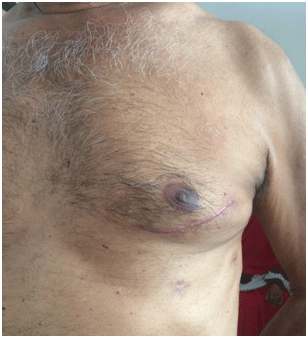Minimally Invasive Heart Bypass Surgery
The traditional bypass procedure is performed by splitting the sternum (or breast bone). To minimize the hospital stay and hasten patient recovery several means of minimally invasive procedures have been developed. These are done through smaller incisions which are not only better cosmetically but also help in faster recovery of the patient.
These are known by several names like:
MICAS (Minimally Invasive Coronary Artery Surgery)
MICS (Minimally Invasive Cardiac Surgery)
MIDCABG (Minimally Invasive Direct Coronary Artery Bypass)
Unlike conventional surgery, which requires a 10″ incision to separate the sternum (sternotomy), MICS can be performed through a 3″-5″ incision placed between the ribs, or may be done with a similar small incision on the lower part of the sternum (LESS procedure – Lower End Sternal Split).
These are known by several names like:
MICAS (Minimally Invasive Coronary Artery Surgery)
MICS (Minimally Invasive Cardiac Surgery)
MIDCABG (Minimally Invasive Direct Coronary Artery Bypass)
Unlike conventional surgery, which requires a 10″ incision to separate the sternum (sternotomy), MICS can be performed through a 3″-5″ incision placed between the ribs, or may be done with a similar small incision on the lower part of the sternum (LESS procedure – Lower End Sternal Split).
Potential Patient Benefits of Minimally Invasive Bypass Surgery
- Shorter length of stay:
Patients may experience less pain and may have a better ability to cough and breathe deeply after the operation so they are often discharged from the hospital in 2 to 3 days, compared to the typical 5 to 7 days for conventional CABG surgery. - Faster recovery: Avoidance of the heart-lung machine and the use of smaller incisions may reduce the risks of complications such as stroke and renal failure so that patients can return to their normal activities in 2 weeks rather than the typical 6 to 8 weeks with conventional surgery.
- Less bleeding and blood trauma: Any time blood is removed from the body and put into the heart-lung machine, the patient must be put on anticlotting medications or given “blood products”. Artificial circuits such as the heart-lung machine can also damage blood cells. These factors may affect the blood’s ability to clot after surgery. Avoiding the heart-lung machine can alleviate this blood trauma.
- Lower infection rate: A smaller incision means less exposure and handling of tissue, which may reduce the chances of infection.

